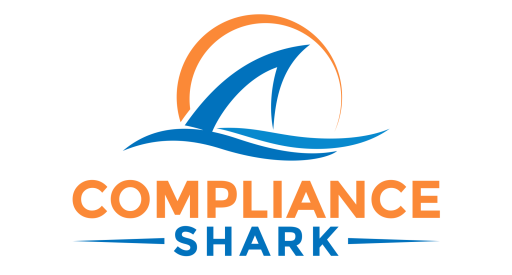Bridging the gap between the real and the perfect world of healthcare linen processing
In an ideal world, healthcare linens are handled with perfect precision.
Every sheet, gown, and towel is meticulously processed to prevent the spread of infection, ensuring the safety of both patients and staff. This is the world that Missy Travis, a certified infection preventionist and founder of IP&C Consulting envisions and works towards every day – a world where healthcare linen handling aligns seamlessly with infection control protocols, minimizing risks and maintaining compliance.
However, as someone with over 18 years of experience running a laundry plant, and eventually, the president of the HLAC Board of Directors who chaired the committee that writes the standards and performs HLAC accreditation inspections, I can tell you that the real world of healthcare linen processing often looks a little different.
The broader landscape of infection prevention
In 2014, a children’s hospital in New Orleans faced a deadly outbreak of Mucormycosis because of contaminated linens. The infections affected five children, tragically claiming the lives of two. Between January 2017 and June 2021, a major US hospital saw 30 patients diagnosed with Mucormycosis, of which 17 were confirmed or probable cases of healthcare-associated mucormycosis (HCM). This outbreak was linked to contaminated linens or other hospital supplies.
The thing about contaminated linen outbreaks is that when they strike, the effects are immediate and severe. While there are extreme cases of fatality, the impact on healthcare facilities can take an enormous financial toll, with hospitals facing millions of dollars in costs due to litigation, extended patient stays, increased use of resources, and penalties for non-compliance with infection control protocols. Additionally, inefficiencies in infection control whether it’s due to staffing shortages, overworked personnel, or inadequate procedures – only exacerbate these costs and damage the facility’s reputation, leading to more losses in patient and community trust as well as decreased credibility.
Some of the key infection prevention challenges today
Today, healthcare facilities are contending with some key issues within the broader landscape of infection prevention.
HAIs: Healthcare-associated infections, or, HAIs, continue to be an ongoing concern globally, with pathogens like C. difficile, MRSA, and catheter-associated infections posing significant risks. The rise of multi-drug-resistant organisms (MDROs) further complicates infection control efforts.
MDROs: Otherwise known as the “nightmare bacteria,” multi-drug-resistant organisms (MDROs), ultimately, treatment and prevention more difficult. Antibiotic stewardship programs focus on optimizing antibiotic use to prevent overuse and misuse, which drive antimicrobial resistance (AMR). These programs ensure antibiotics are only used when necessary and at the correct dosage. Alongside this, infection control measures in healthcare settings – like hand hygiene and proper sanitation – are critical to stop the spread of MDROs and protect vulnerable patients
COVID: Although behind us, the pandemic has left a deep impact on the healthcare world when it comes to infection prevention strategies. Hospitals are now contending with how to treat respiratory infections all the while preventing the spread of new variants or other emerging viruses. Coupled with that, staffing shortages and burnout during and post-pandemic have affected infection prevention efforts as overworked staff may find it harder to strictly follow protocols.
A prime example comes from a survey conducted in 2023 which revealed that more than 50% of healthcare workers, including nurses, physicians, and other staff, reported feeling overworked and burned out. This burnout led to higher rates of staff turnover, with 28.7% of healthcare workers expressing intent to leave their jobs. Ultimately, though, these issues made it harder for staff to strictly follow infection control protocols, increasing the risk of errors and lapses in preventing HAIs.
Technology: Hospitals are using real-time data and machine learning tools to track infection trends and improve response times. These technologies help identify outbreaks and predict infection risks, ensuring quicker interventions. However, implementing them across large networks continues to be challenging because of the high cost of infrastructure and the need for staff training to use these systems effectively.
Linen and laundry: Linen and laundry compliance is crucial in infection prevention, especially as hospitals recognize the significant role textiles play in pathogen transmission. Contaminated linens can harbor bacteria, viruses, and fungi, making proper cleaning and handling essential. This has led to a stronger focus on standardized cleaning procedures, regular compliance checks, and strict monitoring of handling and sterilization processes.
There is a lot more that our hospital environmental managers, supply chain managers, and infection preventionists are contending with today within their facilities, but, of course, we can go into all of that in another blog.
The bottom line
Now, as you can see, my world of linen and laundry compliance is just one aspect of the complex field of infection prevention in healthcare. By ensuring proper handling and processing of hospital linens is a critical step toward preventing HAIs. By understanding and implementing linen compliance, healthcare facilities and providers can move one step closer to a comprehensive and well-rounded infection prevention strategy.
Infection outbreaks linked to contaminated healthcare linens don’t just damage reputation and cost money – they ultimately put staff, patients, and the community’s most vulnerable at risk, from infants to the ill.
With over 18 years of experience in laundry operations and a deep commitment to healthcare linen safety, I teamed up with Missy Travis to create this online course. For a limited time, you can access the first three modules of the course for US$199. We've designed the course to be practical and accessible for any healthcare facility, regardless of size or resources.
Learn more about the course here.
At Compliance Shark, our mission is simple: to help healthcare facilities maintain the highest standards of linen safety and infection prevention. We aim to ensure that hospitals and healthcare providers have the knowledge and tools to proactively prevent infection outbreaks, keeping their patients safe and their operations compliant.
For those looking to dive even deeper into linen compliance or discuss specific needs, feel free to email me directly at gregory@complianceshark.com for a free consult chat.

